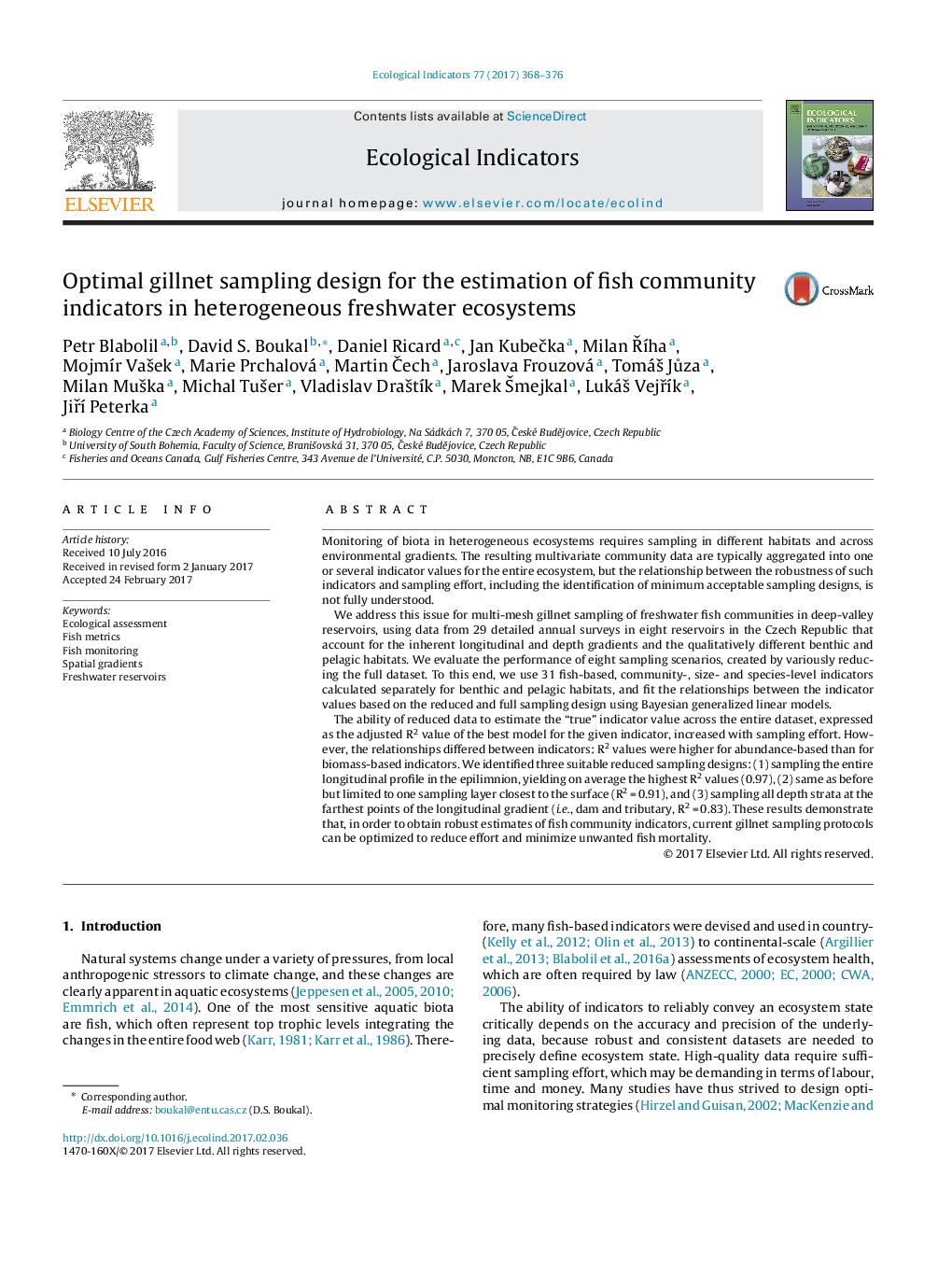| کد مقاله | کد نشریه | سال انتشار | مقاله انگلیسی | نسخه تمام متن |
|---|---|---|---|---|
| 5741740 | 1617125 | 2017 | 9 صفحه PDF | دانلود رایگان |
- We studied the impact of sampling effort reduction on fish indicators.
- We use data from 29 annual surveys in eight heterogeneous ecosystems.
- We compare 31 indicators covering community- and species-level characteristics.
- Abundance-based indicators were more robust than biomass-based indicators.
- While longitudinal gradients are important, deep habitats can be ignored.
Monitoring of biota in heterogeneous ecosystems requires sampling in different habitats and across environmental gradients. The resulting multivariate community data are typically aggregated into one or several indicator values for the entire ecosystem, but the relationship between the robustness of such indicators and sampling effort, including the identification of minimum acceptable sampling designs, is not fully understood.We address this issue for multi-mesh gillnet sampling of freshwater fish communities in deep-valley reservoirs, using data from 29 detailed annual surveys in eight reservoirs in the Czech Republic that account for the inherent longitudinal and depth gradients and the qualitatively different benthic and pelagic habitats. We evaluate the performance of eight sampling scenarios, created by variously reducing the full dataset. To this end, we use 31 fish-based, community-, size- and species-level indicators calculated separately for benthic and pelagic habitats, and fit the relationships between the indicator values based on the reduced and full sampling design using Bayesian generalized linear models.The ability of reduced data to estimate the “true” indicator value across the entire dataset, expressed as the adjusted R2 value of the best model for the given indicator, increased with sampling effort. However, the relationships differed between indicators: R2 values were higher for abundance-based than for biomass-based indicators. We identified three suitable reduced sampling designs: (1) sampling the entire longitudinal profile in the epilimnion, yielding on average the highest R2 values (0.97), (2) same as before but limited to one sampling layer closest to the surface (R2Â =Â 0.91), and (3) sampling all depth strata at the farthest points of the longitudinal gradient (i.e., dam and tributary, R2Â =Â 0.83). These results demonstrate that, in order to obtain robust estimates of fish community indicators, current gillnet sampling protocols can be optimized to reduce effort and minimize unwanted fish mortality.
Journal: Ecological Indicators - Volume 77, June 2017, Pages 368-376
